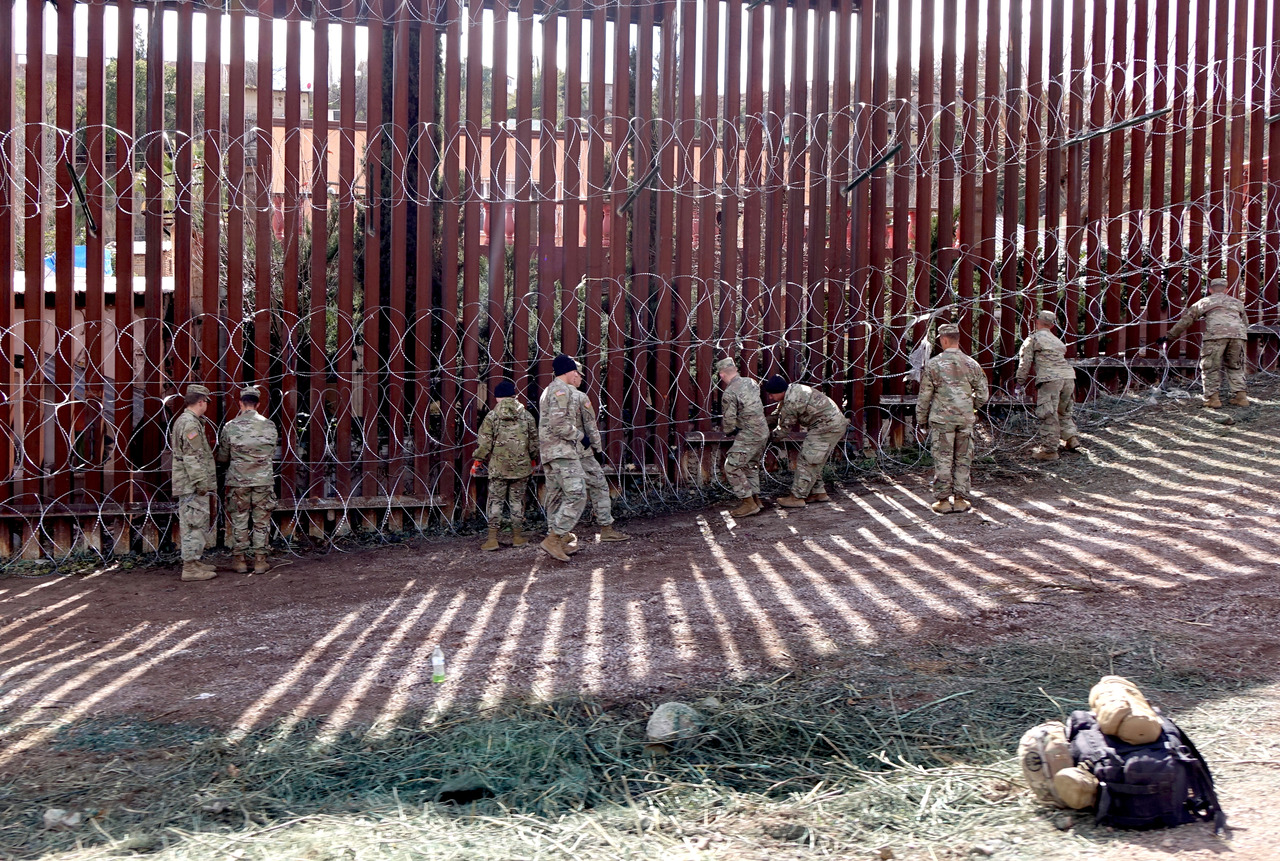
Trump Sends U.S. Military Troops to Reinforce Southern Border
The troops are likely to provide a simple influx of manpower in an effort that has suffered to keep pace with a massive influx of migrants.
Active-duty U.S. troops are being sent to the U.S. border with Mexico, a move consistent with President Donald Trump’s promises to beef up the U.S. military presence along the southern border. The newly mobilized troops will join the 2,200 active-duty troops and 4,500 National Guardsmen who are already stationed along the southern border.
Campaign Promises
When Trump first entered the political fray, declaring his candidacy for the presidency in 2015, ahead of the 2016 election, he did so with an emphasis on immigration-related grievances. The grievances resonated and Trump was elected. So, unsurprisingly, Trump leaned into similar immigration-related grievances and vowed to crack down on illegal immigration if elected. Now, having been reelected, in part, to uphold stricter immigration policies, Trump is making immediate moves.
The deployment is understood to just be the first wave. “Even more active duty troops are expected to be deployed to the border in the coming weeks and months,” CNN reported, “with the first wave laying the groundwork for a larger military footprint.”
Whether the troops will be armed remains unclear. But what is clear is that the troops do not have the authority to assist in law enforcement efforts, i.e., make arrests or seize drugs; the troops cannot engage with the migrants for any other purpose than transportation. The reason: an old law known as “posse comitatus,” which restricts U.S. troops from providing domestic law enforcement without authorization. So, without the authorization, what exactly will the troops be doing?
Symbolic or Functional?
The troops currently on the southern border are based out of El Paso, Texas, and support the U.S. Customs and Border Protection’s work “performing mostly logistical and bureaucratic tasks like data entry, detection and monitoring, and vehicle maintenance.” Expect the fresh batch of troops to perform in a very similar capacity.
“They will be helping to maintain operational readiness for Border Patrol, assisting in command-and-control centers, and providing more intelligence specialists to assess threats and migrant flows,” CNN reported. “The troops are also expected to augment air assets and help with air operations.”
Generally, the troops are likely to provide a simple influx of manpower in an effort that has suffered to keep pace with a massive influx of migrants. The boost in manpower along the southern border could free up Immigration and Customs Enforcement officers, who have been bogged down in operations along the border, to shift their efforts toward making arrests of undocumented immigrants already inside the country.
Back to Basics
The deployment of U.S. troops within the domestic United States is unusual. But the primary function of the military is to protect territorial integrity and security interests more broadly. Defending a border is, traditionally, an inherent part of military application. However, the United States enjoys such providential geography—including weak hemispheric neighbors, plus sprawling oceans on both the western and eastern borders—that U.S. territorial integrity is taken for granted, seemingly left on autopilot. The result is a military force that has the bandwidth to be used overseas, on less existential matters. So, while the deployment of U.S. troops to the southern border may seem unorthodox, it is very much a return to the basic principles of military application.
About the Author: Harrison Kass
Harrison Kass is a senior defense and national security writer with over 1,000 total pieces on issues involving global affairs. An attorney, pilot, guitarist, and minor pro hockey player, Harrison joined the US Air Force as a Pilot Trainee but was medically discharged. Harrison holds a BA from Lake Forest College, a JD from the University of Oregon, and an MA from New York University. Harrison listens to Dokken.
Image: Christopher G. Kerr / Shutterstock.com